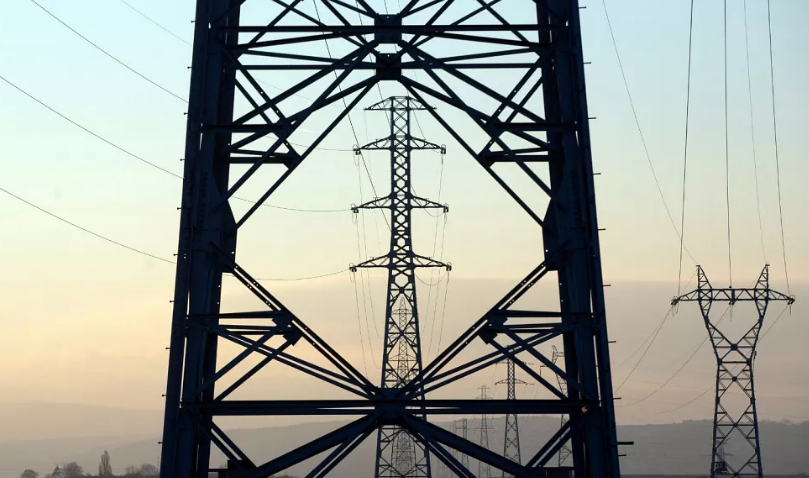Technology
Samsung Enters Smart Ring Market with Galaxy Ring, Aiming to Compete Without Subscription Fees

Samsung is making a bold entry into the smart ring market with its new product, the Galaxy Ring, setting its sights on challenging established competitors like Oura. The tech giant hopes its strategy of offering a no-subscription-fee model will provide a competitive edge in this growing sector.
The Galaxy Ring represents Samsung’s first venture into the smart ring arena, a market currently led by Oura. Other notable players include Xiaomi, Ultrahuman, and RingConn. Samsung aims to distinguish itself with features such as automatic workout-tracking, comprehensive sleep analysis, and temperature monitoring, all of which contribute to personalized health insights and energy scores.
The global wearable tech market, valued at approximately $120.54 billion in 2023, is projected to expand to $157.94 billion in 2024, with expectations to reach $1,415.26 billion by 2032, according to Fortune Business Insights. Major players in the wearable tech field include Apple, Samsung, Microsoft, Sony, Huawei, and Fossil Group. While smartwatches and fitness trackers dominate, smart rings are emerging as a popular alternative due to their lightweight, discreet design, and effective health tracking capabilities.
James Kitto, Samsung’s Vice President and Head of UK and Ireland, highlighted the anticipated growth of the smart ring market, citing projections that the category will grow sixfold by 2030. “There has been real anticipation for a Samsung smart ring, and the Galaxy Ring is designed to offer the best of Samsung’s innovations in a compact form, delivering a consumer experience unlike any other,” Kitto told Euronews. He emphasized Samsung’s commitment to enhancing health through interconnected devices and services.
Kitto also noted that the Galaxy Ring integrates seamlessly into Samsung’s Galaxy ecosystem, promising an unmatched experience with detailed health and wellness insights. The design of the Galaxy Ring focuses on comfort and wearability, aiming to be thin and light enough for continuous wear.
Samsung’s entry into the smart ring market reflects its strategy of leveraging its technological expertise and established reputation in health and wellness to offer a compelling product that combines innovation with user-friendly features, all while eliminating the barrier of subscription fees.
Innovation
Open-Source Recycling Movement Gains Ground as Precious Plastic Community Recycles 1,400 Tonnes in One Year
Technology
Calls for European Supergrid Intensify Amid Energy Crises and Climate Pressures

As Europe battles growing climate extremes, energy instability, and geopolitical pressures, momentum is building around a decades-old concept: the European supergrid. The idea, once considered aspirational, is regaining urgency amid widespread power outages and rising reliance on renewable energy.
The European Union is set to install 89 gigawatts of new renewable energy capacity in 2025, a 10-gigawatt increase from the previous year, most of it driven by solar projects. This expansion is central to the EU’s 2030 climate targets, which aim to cut net greenhouse gas emissions by at least 55 percent from 1990 levels. Yet as renewable penetration grows, so too does the need for a more integrated, resilient power network.
Recent blackouts in Spain and Portugal highlighted vulnerabilities in the continent’s energy systems, prompting experts to revisit the supergrid concept. A pan-European high-voltage grid could allow electricity generated from wind in the north or solar in the south to flow seamlessly across borders, balancing supply and demand.
“A supergrid would allow green energy to flow across borders efficiently, balancing supply and demand; it could smooth out energy highs and lows, cut prices, boost resilience, and help Europe ditch fossil fuels faster,” said Michael Ashley Schulman, CIO at Running Point Capital Advisors.
France, Germany, the UK, and Italy are already developing “mini-supergrids” — multi-terminal high-voltage DC (HVDC) networks. Over time, these could be linked like a motorway system, gradually forming a broader supergrid. Offshore grids are also gaining traction as a cost- and carbon-efficient way to integrate large-scale wind energy.
But building a Europe-wide grid is no simple task. Regulatory fragmentation, complex permitting across countries, and local opposition have slowed progress. “Stitching together dozens of national grids isn’t just an engineering project; it’s a political minefield,” Schulman noted.
Beyond logistics, some warn that the supergrid must reflect more than economic efficiency. “A supergrid must serve ecological integrity, social equity, and energy democracy — not just corporate interests,” said Therese Guttmann of Vienna’s Institute for Ecological Economics.
Critics argue that decentralised solutions and local energy systems should develop in parallel to avoid replacing one form of centralisation with another. Others caution against cybersecurity risks and systemic fragility, warning that overconnectivity could make the entire continent vulnerable to disruptions.
The European Commission estimates that €584 billion in grid investment is needed by 2030 to meet energy transition targets. While the supergrid could play a major role, analysts agree it must be part of a broader mix of infrastructure improvements and decentralised technologies.
As the continent continues to navigate a fragile energy landscape, the supergrid remains both a tantalising vision — and a test of Europe’s ability to act collectively.
Technology
Renewable Energy in Heating and Cooling: Europe’s Uneven Progress
As Europe continues to focus on energy security, especially in light of Russia’s invasion of Ukraine, renewable energy has become a key component in diversifying energy sources. The share of renewables in Europe’s overall energy use has been steadily rising, but progress in the heating and cooling sector varies significantly across the continent.
In 2023, renewables accounted for 26.2% of the EU’s heating and cooling energy, closely mirroring the overall share of renewables in total energy consumption. However, this figure masks wide disparities between countries. While Iceland leads the way with an impressive 84% of its heating and cooling needs met by renewables, countries like Ireland report just 8%. Sweden and Estonia are also among the top performers with renewable heating shares of 67%.
Several factors explain these differences, according to Professor Pawel Oclon from Cracow University of Technology. Climate conditions, resource availability, and the state of energy infrastructure all play a role. Additionally, countries with established district heating systems, such as those in the Nordic and Baltic regions, have a smoother transition to decarbonized heating solutions. These systems allow for the easier replacement of large, centralized boilers with renewable alternatives like heat pumps or biomass boilers, rather than needing to replace individual boilers across many households.
The Nordic countries, excluding Norway, dominate Europe in renewable heating. Nations such as Sweden, Finland, and Denmark boast renewable heating shares well above the EU average. Norway, however, lags at 34%, though experts suggest that this figure underrepresents the country’s reliance on renewable electricity for heating, given its vast hydropower and wind resources.
In contrast, many Western European nations have made slower progress. Among the EU’s four largest economies, only France (30%) exceeded the EU average in renewable heating, while countries like Germany (17%), Spain (21%), and Italy (22%) fell behind. These nations have traditionally relied on individual gas boilers, which complicates the transition to renewable heating systems.
Austria stands out in Central Europe, with 39.4% of its heating needs met by renewables, largely due to its longstanding use of biomass in both individual and district heating systems.
Despite some progress, experts warn that the pace is insufficient to meet the EU’s 2030 target of 49% renewable energy in buildings. “The growth is notable, but it’s far too slow to reach the EU’s climate and energy goals,” said Rana Adib, executive director of REN21, a global network promoting renewable energy.
To accelerate progress, experts call for increased investment in research and development to improve technologies like heat pumps, solar thermal collectors, and energy storage systems. Additionally, stronger policy focus, including support for electric heat pumps, decarbonized district heating, and solar thermal systems, is critical.
As Europe continues to reduce its dependence on Russian gas, the transition to renewable heating remains an essential part of the EU’s energy strategy, helping to ensure a more secure and sustainable future.
-

 Entertainment1 year ago
Entertainment1 year agoMeta Acquires Tilda Swinton VR Doc ‘Impulse: Playing With Reality’
-

 Business2 years ago
Business2 years agoSaudi Arabia’s Model for Sustainable Aviation Practices
-

 Business2 years ago
Business2 years agoRecent Developments in Small Business Taxes
-

 Home Improvement1 year ago
Home Improvement1 year agoEffective Drain Cleaning: A Key to a Healthy Plumbing System
-

 Politics2 years ago
Politics2 years agoWho was Ebrahim Raisi and his status in Iranian Politics?
-

 Business1 year ago
Business1 year agoCarrectly: Revolutionizing Car Care in Chicago
-

 Sports1 year ago
Sports1 year agoKeely Hodgkinson Wins Britain’s First Athletics Gold at Paris Olympics in 800m
-

 Business1 year ago
Business1 year agoSaudi Arabia: Foreign Direct Investment Rises by 5.6% in Q1





























